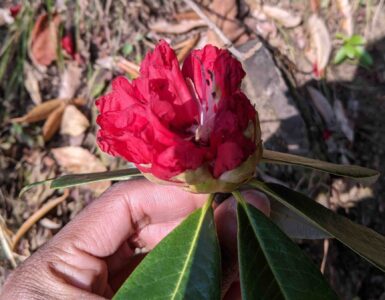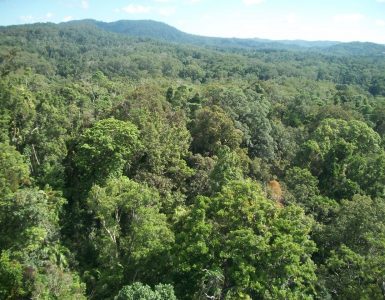About 2500 years ago, a young royal prince, Siddhartha Gautama, embarked on a profound spiritual journey. Having lived his early years, never having witnessed problems of old age, sickness, poverty, or death, he renounced his opulent lifestyle and began his search for truth.
Following the traditions of Santan Dharma, Siddhartha interacted with spiritual teachers, meditated, practiced yoga and self-discipline, and deeply explored the ascetic path. Still, he could not attain the ultimate knowledge until he sat under a tree – It was here, in the serenity of nature, that he experienced a transcendent awakening, breaking free from the cycle of suffering and rebirth.
This tree, which provided Siddhartha Gautama with space, shelter, and shade, became the Bodhi Tree and one of the sacred symbols of Buddhism. The Bodhi Tree is the place where a royal prince became a Buddha.
Bodhi, which means “awakening” or “enlightenment” in Sanskrit, aptly defines this tree as it is believed that Buddha gained spiritual enlightenment (bodhi) after meditating under it for 49 days.
Bodhi Tree
Given the historical and cultural significance of the Bodhi Tree, the entire place is of special importance.
This large sacred fig tree (ficus religiosa) is located in Bodh Gaya, in the Gaya district of the Indian state of Bihar, about 115 km south of its state capital, Patna.
Near the Bodhi Tree is a temple dating from the 5th or 6th centuries. It is one of the earliest Buddhist temples built entirely in brick, still standing in India. The Bodhi Tree, along with the temple, is part of a large Mahabodhi Temple Complex, a UNESCO World Heritage Site, and is one of the four holy sites related to the life of the Lord Buddha.
The iconic sandstone temple rises to about 52 m amid lush green lawns, with intricate engravings and arch motifs on its shikhara (tower). The temple is surrounded by beautifully carved votive stupas, chaityas (Buddhist prayer halls), and statues of Lord Buddha.
Inside the temple, a gold-plated statue showcases Lord Buddha in his famous bhumisparsha mudra, with one finger touching the earth, asking it to witness his enlightenment.
Today, the Bodhi Tree is a place of pilgrimage for people around the world. The place is swamped daily with visitors, travelers, seekers, and monks. It is common to see some sitting here peacefully, reading or meditating.
Every year on December 8, Buddhist followers worldwide celebrate Bodhi Day, a celebration of Buddha’s enlightenment underneath the Bodhi tree.
According to ancient texts, devotees of Buddhism carried branches of the original Bodhi Tree to different parts of the world. They planted them in various countries like Sri Lanka, Vietnam, Australia, etc.
It is believed that any Bodhi Tree in existence worldwide is a direct descendant of the one under which the Buddha had meditated. The current Bodhi Tree at Bodh Gaya is probably the fifth succession of the original tree.
In a way, the continuity of these trees reinforces the timelessness of Buddhist teachings.
Wrapping Up
The significance of the Bodhi Tree extends beyond Buddhism, as its message of enlightenment and inner peace has resonated with people of diverse faiths and backgrounds.
The Bodhi Tree’s deep-rooted connection to the earth underscores the importance of being in harmony with nature. It serves as a poignant reminder that spirituality is not isolated from the natural world but rather an inseparable and integral component.






Add comment